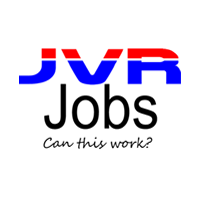Key Outcomes Approved architecture designs that meet business objectives, non-functional requirements (NFRs), and total cost of ownership targets. Integration patterns and data flows that are reliable, observable, secure, and scalable. Artefacts and decisions recorded in recognised architecture repositories and decision registers. Reduced deviations from standards, increased pattern reuse, and faster time-to-approval. Core Responsibilities Application Architecture Translate business goals into target application architectures, selecting appropriate paradigms and runway for incremental delivery. Define NFRs and derive testable acceptance criteria. Map bounded contexts, component interfaces, deployment topologies, and operational runbooks for Day-2 operations. 2) Integration Architecture Define integration strategies and select patterns appropriate to latency, throughput, and reliability needs. Specify API standards, versioning, security, throttling and service-level objectives. Design integration observability, error handling, idempotency, and retry/back-off strategies. 3) Data Architecture Produce conceptual/logical/physical data models; define lineage, metadata, master/reference data approaches, and data product contracts. Guide data platform choices, ingestion patterns, and quality controls. Ensure data usage complies with privacy regulations, records management, and data retention requirements. 4) Security, Privacy & Risk (by design) Embed information security policies and privacy regulations into designs. Define security NFRs, run design risk assessments, and plan controls. Document assumptions, risks, and deviations; propose mitigations and escalate through governance forums. 5) Governance & Standards Prepare architecture packs and present them at architecture peer reviews and review forums. Align solutions with enterprise reference architectures, principles, patterns, and technology standards. Maintain architecture decision records and contribute to the pattern library and roadmaps. 6) Delivery Enablement & Vendor Management Partner with delivery leads, engineers, analysts, and vendors to sequence scope and ensure buildability. Provide design assurance during build and support readiness for testing. Govern vendor designs to ensure reusability, compliance, and commercial soundness. Required Experience & Skills Architecture & Delivery 10 years in software/solution architecture across application, integration, and data domains. Track record producing HLDs, NFRs, interface specs, data/integration designs, and runbooks. Strong command of trade-off analysis and evolutionary delivery. Technology Breadth Applications: distributed systems design, containerisation, CI/CD, infrastructure-as-code. Integration: API management, messaging/streaming, API security & life-cycle management. Data: modelling, data contracts, ingestion/ELT, warehousing, lineage, metadata, quality & MDM. Security & Operations: identity and access, encryption, observability, resilience testing. Governance & Compliance Knowledge of enterprise architecture standards, information security policies, privacy regulations. Experience with peer reviews, design authorities, and architecture review forums. Behaviours & Collaboration Pragmatic communicator who can simplify complexity. Influencer & facilitatorable to build consensus and land decisions. Outcome-focused and comfortable with ambiguity. Qualifications Bachelors degree in Computer Science/Engineering or equivalent experience. Recognised architecture certifications such as TOGAF. Continuous learning in security, data, or integration disciplines. Soft Skills & Behaviours Strategic Thinking Ability to see the bigger picture, align solutions with business goals, and anticipate downstream impacts. Influencing & Stakeholder Management Skilled at building consensus across business, IT, and vendor teams; able to handle contention diplomatically. Communication Excellence Can simplify complex technical concepts for non-technical stakeholders and articulate trade-offs clearly. Collaboration & Facilitation Works effectively in cross-functional teams; facilitates workshops and design sessions to drive decisions. Adaptability & Resilience Comfortable with ambiguity, shifting priorities, and iterative delivery in fast-paced environments. Problem-Solving & Critical Thinking Uses structured approaches to resolve complex issues and make sound decisions under pressure. Leadership Without Authority Guides and mentors delivery teams, promotes best practices, and drives adoption of standards without formal line authority. Customer-Centric Mindset Keeps user experience and business value at the core of design decisions.
